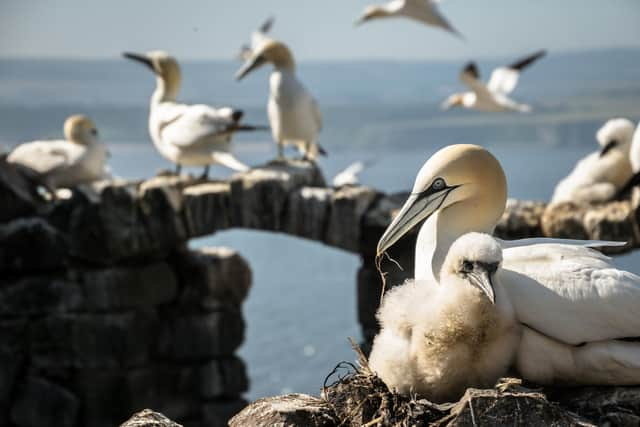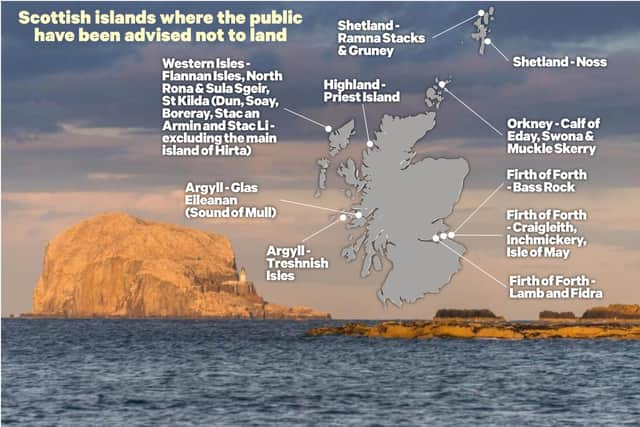Bird flu Scotland: 23 Scottish islands out-of-bounds to public as 'devastating' bird flu spreads
NatureScot has issued a list of islands – from Shetland to the Outer Hebrides, Argyll and the Firth of Forth – that visitors have been asked to stay away from this summer.
Several thousand seabirds are known to have died in Scotland as avian flu spreads throughout the country, with great skuas, gannets and guillemots hardest hit by the H5N1 virus.
Advertisement
Hide AdAdvertisement
Hide AdA 85 per cent decline in great skua numbers has been recorded in Orkney alone with council staff in Aberdeenshire, dressed in protective white suits, removing more than 1,000 dead birds from coastlines in recent weeks.
Island access is being restricted in a bid to to stop birds being disturbed, creating a risk they will move elsewhere, and also to prevent any contamination on visitors’ shoes and clothing being transferred to other sites.
Eileen Stuart, NatureScot’s deputy director of nature and climate change, said the decision to stop landings at the islands was “not an easy decision”.
Ms Stuart said: “Restricting visits to these islands is not an easy decision, but we are increasingly concerned about the devastating impact avian flu is having in Scotland, particularly on our seabird colonies.


“Many of our Scottish islands are a haven for internationally important bird populations. With the avian flu crisis evolving so quickly, we have to respond to reduce the spread of this virulent disease. Tragically, this destructive disease could be with us for some time to come.”
In Orkney, landings have been halted until the end of August on Calf of Eday, Swona and Muckle Skerry to protect breeding puffins, Arctic skuas and Arctic terns.
The restrictions will also be in place over the period in the Firth of Forth on Craigleith, Inchmickery and Isle of May to protect the same species.


Meanwhile, landings will be stopped until mid-September on Noss in Shetland, Glas Eileanan in the Sound of Mull and on Lamb and Fidra in the Firth of Forth to protect breeding great skuas, common terns, cormorants and fulmars.
Advertisement
Hide AdAdvertisement
Hide AdAt Ramna Stacks and Gruney in Shetland, landings will be halted until mid-October to protect breeding gannets, storm-petrels and Manx shearwaters.
The October restrictions will also apply to the Western Isles, where the public are asked not to visit Flannan Isles, North Rona & Sula Sgeir and St Kilda, where Dun, Soay, Boreray, Stac an Armin and Stac Li will remain out of bounds. The main island of Hirta is not affected.
Visits to Priest Island in the Summer Isles will also be restricted until October, along with Treshnish Isles in Argyll and Bass Rock in the Firth of Forth.
Visitors can still head to islands by boat and view the summer seabird spectacle at a safe distance and without coming ashore.
At breeding sites not included in the list of 23 islands, visitors can view seabirds from a safe distance and without entering nesting areas.
NatureScot said the situation was under constant review, with restrictions to be lifted as soon as possible once breeding season has finished.
Commercial boat operators have been alerted to the restrictions, which follow a rapid assessment of all island Special Protection Areas (SPAs) designated for breeding seabirds.
Comments
Want to join the conversation? Please or to comment on this article.
